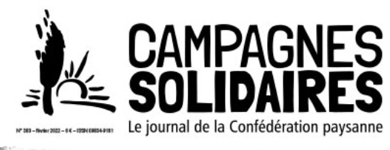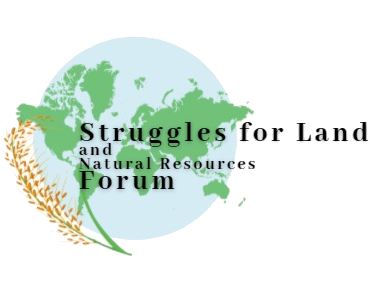An example of management of the commons: public maritime space
Article published in " Campagnes Solidaires " by Jean François Périgné,
Mussel producer in Oléron and member of the International Commission of the Confédération Paysanne
n

The Public Maritime Domain: an original way of managing a common property
France is the world's 2nd largest maritime power. For a very long time, it has established the principle that maritime space is a common good that cannot be privatized.
As early as 1160, Eleanor of Aquitaine established the rules of practice at sea and founded what was to become the social security system for seafarers (ENIM*) in a founding royal edict, "the roles of Oleron". It was not until Colbert's edict of July 31, 1681 that the rules in force today were established. This historical focus shows how relevant this "state" entry to maritime spaces is.
On this DPM*, which extends from the limit of territorial and international waters to the level of the highest seas towards the land, there is no lack of sea users. Fish farmers, fishermen, but also the merchant navy, extraction activities (aggregates, oil, minerals...) and of course the national navy. As for other users, there are the yachting of course, water sports and aquatic activities, leisure activities such as fishing on board or fishing on foot, or swimming ...
How can we manage the conflicts of use that are bound to arise when faced with a plethora of users with a sometimes incompatible approach between recreational and professional activities? A SMVM* is set up in close consultation with the different actors and the State. The maritime space is divided into "priority" (but not exclusive) allocation zones: navigation corridors for the merchant navy, military zones, shellfish farming or fishing zones, bathing zones, etc. This distribution is not fixed and can be reviewed and adapted to changes in use.
As far as our activities are concerned, the areas allocated in the SMVM to shellfish farming are cadastralized and allocated to professionals in the form of concessions. These are governed by strict specifications established in consultation between the DDTM* and the professional representatives of the CRC*. They cover technical issues (marking out, maintenance, animal loads, types of authorized installations, etc.), social issues (access priority, maximum surface area, etc.) and environmental issues (protection of spawning grounds, eelgrass areas (posidonia in the Mediterranean), cleaning of mudflats, etc.). Any development or installation must be able to be dismantled within 24 hours.
Any EU citizen of legal age with a BPAM* has access to the concessions. The fee is symbolic, but compliance with the rules is closely monitored. The newly installed person is given a temporary concession title for 5 years. This will be renewed in the form of a 25-year emphyteutic lease thereafter. At any time, failure to comply with the rules may result in dispossession.
After the trade, the vacant concession is posted with publicity in all the town halls of the maritime district concerned and the candidates make themselves known. It will be reallocated according to priority rules.
A concession title cannot be exchanged for cash. Only the installations in place (spinneret, bouchots, oyster tables) and the livestock present at the time of the transfer are subject to a financial transaction.
The concession title is nominative. This particularity protects the professionals from any attempts to enter the business by large agro-industrial or mass distribution companies. As in agriculture, there are company structures in shellfish farming, but in all cases the majority holder of the shares must meet the requirements mentioned above.
There is no minimum surface area to start with. The young person must strive to reach an "economically average" surface area after seven years, calculated on the basis of the annual census of shellfish farming activities. On the other hand, there is a maximum surface area beyond which the licensee can no longer apply.
This model, with adaptations, is more or less adopted in certain land areas (national parks, coastal conservatory, Larzac landholding). It is a lever to get out of the speculative context of private land ownership, a brake on expansion and a tool for protecting professionals. It establishes a "community of destiny" between professionals.
*ENIM : Etablissement national des Invalides de la Mer
*DPM: Public Maritime Domain
*SMVM: Scheme for the Development of the Sea
*DDTM: Departmental Directorate of Territories and the Sea
*CRC: Regional Shellfish Growing Committee
*BPAM : Brevet Professionnel Aquacole et Maritime
